Dragonflies Continue to Thrive as Ecology Changes
Ferocious predators roam the streams and meadows of Illinois’ wetlands and prairies. These stealthy hunters lurk on the water’s surface or fly through the air, waiting for their next meal to come along. And when it does, they strike with lightning speed and grab their unsuspecting victim.
No, we are not talking about the Creature from the Black Lagoon or any other monster from those 1950’s movies that showcased mutant species supposedly created by atomic testing. You can enjoy your favorite fishing hole or pond without fearing for your life, unless you are a mosquito, for the fierce creatures to which we are referring are beautiful dragonflies!
Dragonflies rose from Earth’s primordial swamps over 300 million years ago, making them some of our oldest creatures. While they are considerably smaller than their 18-inch ancestors, in many ways they remain unchanged.
Dragonflies look very much like their relatives the damselflies, however, there are obvious differences which make it easy to tell them apart. Both possess two sets of wings, but at rest, a dragonfly holds its wings straight out from its side, while most damselflies fold their wings back. Dragonflies have large eyes covering most of their heads, while a damselfly’s eyes are set much farther apart. The dragonfly’s abdomen is usually somewhat flattened while a damselfly’s is more round and needle-like.
The dragonfly’s nickname of “mosquito hawk” is well deserved. During its life span, a dragonfly consumes thousands of insects, mostly mosquitoes. Dragonflies form a sort of “basket” with their hairy legs and feet to catch prey. With a large dragonfly population, a public place with hiking trails and ponds, like Paul Wightman Subterranean Nature Preserve (PWSNP), 3325 G Road, Fults, is much more pleasant for visitors since they keep the number of insects who look upon humans as their next meal in check.
Illinois is home to 98 dragonfly species, according to the Illinois State Museum. The species are divided into seven families: clubtails, cruisers, darners, emeralds, petaltails, skimmers and spiketails. Like other insects, dragonflies go through three life stages: egg, larva and adult. Adult females lay their eggs in the spring, typically in floating plant debris. The larvae emerge three weeks later, feeding on aquatic life for about 11 months. Once matured, the nymphs walk out of the water, split from their skin and emerge as adults with wings. The adults remain near their water habitats, but spend most of their time over land. Adult North American dragonflies generally live from two to four weeks. It is known that a few dozen North American species migrate south in great numbers, creating a magnificent spectacle. Northward spring migrations have been less documented.
Dragonflies known to inhabit PWSNP are:
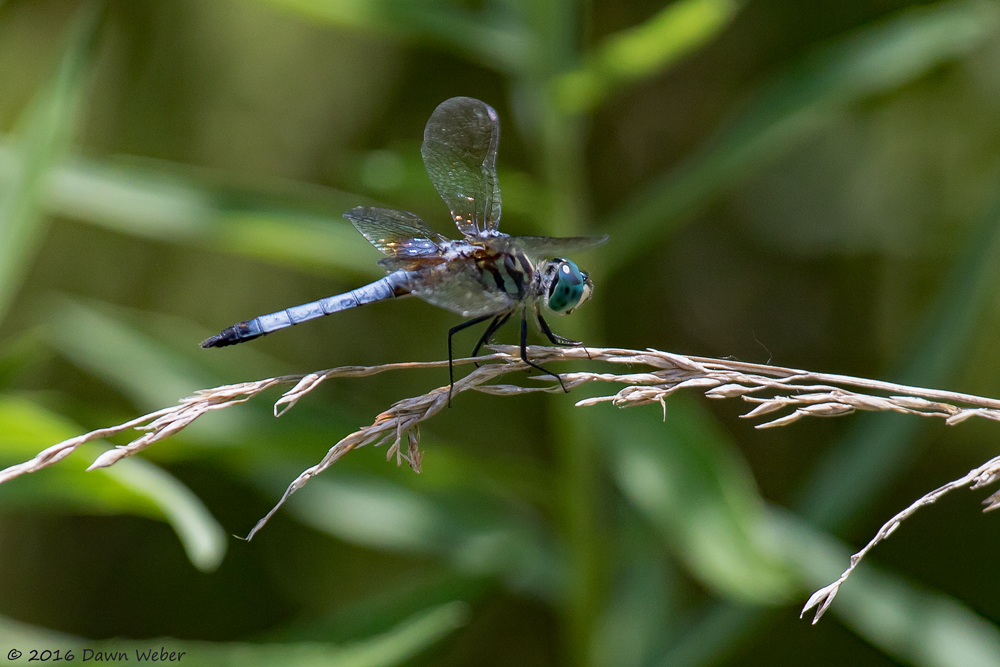
Blue Dasher – The Blue Dasher is a brilliant blue color that often catches the eye. Both males and females typically have clear wings, although the male’s wings may sometime have a dark brown stripe. Males and females can most easily be distinguished by the eyes, which are bright blue or green in males and reddish-brown in females. The females also typically have a shorter abdomen then the males. Their preferred habitat is quiet, still bodies of water.
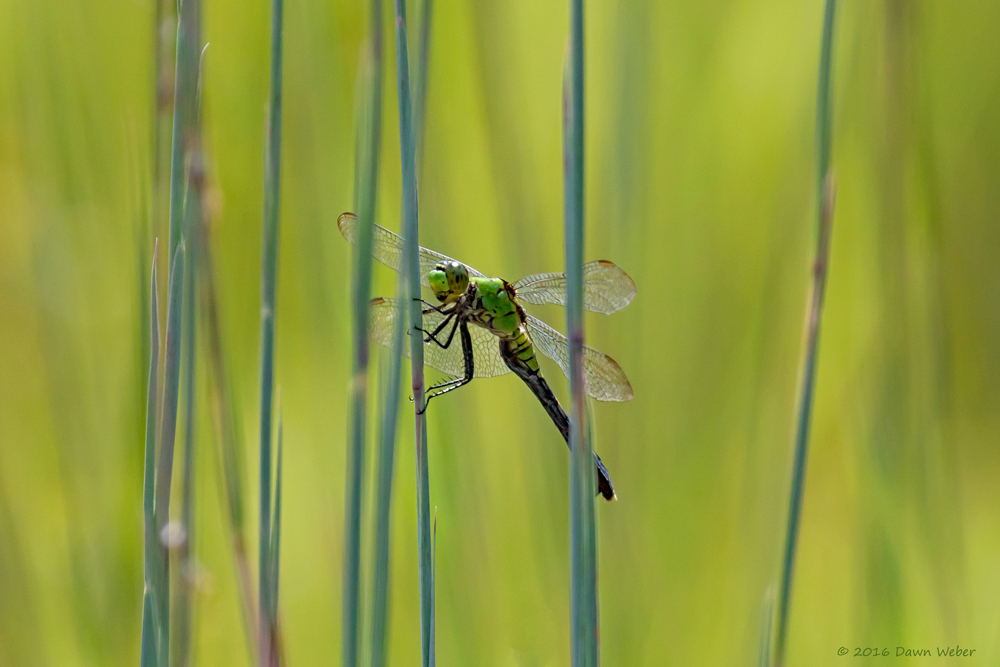
Common Green Darner – The Common Green Darner gets its name because its abdomen looks similar to a darning needle. Both males and females have clear wings with yellow costa, which is the main vein that runs along the edge of the wings. Both males and females have light green faces, but the bodies differ. Males have primarily blue abdomens that are green on the segment closest to the head, while females have brownish-green or brownish-red abdomens. They are typically found near bodies of water with ample vegetation.
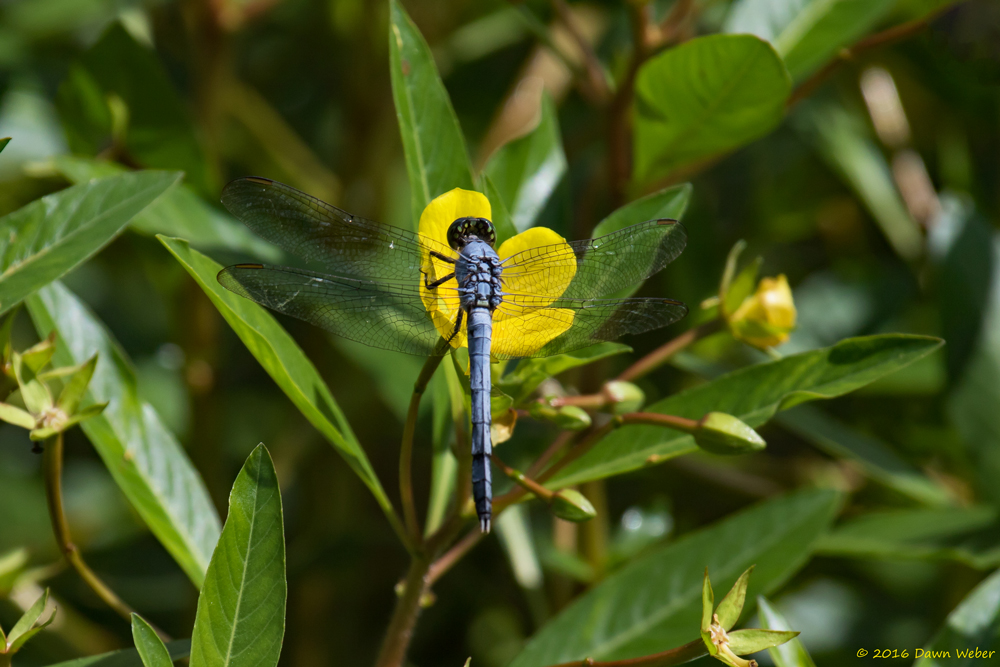
Eastern Pondhawk – The Eastern Pondhawk is recognizable by its bright green face. The wings of both the males and females are clear and appear lacy black. Males and females can be distinguished by their bodies. Females are green with black markings on the abdomen, while males have light or powder blue abdomens and thoraxes. They can be found near many bodies of water, including lakes, ponds and even ditches.

Halloween Pennant – As you might expect, the Halloween Pennant dragonfly gets its name from its coloring, primarily its orange wings that feature dark brown or black bands. Females typically have yellow markings on their faces and a yellow abdominal stripe and wing veins, while the males start life with yellow markings that turn more red as they mature. They typically live near lakes, ponds and marshes, where they are often seen resting on the tops of plants near the water’s edge. Halloween pennants are considered exceptional flyers and can remain in flight during rain and strong winds.
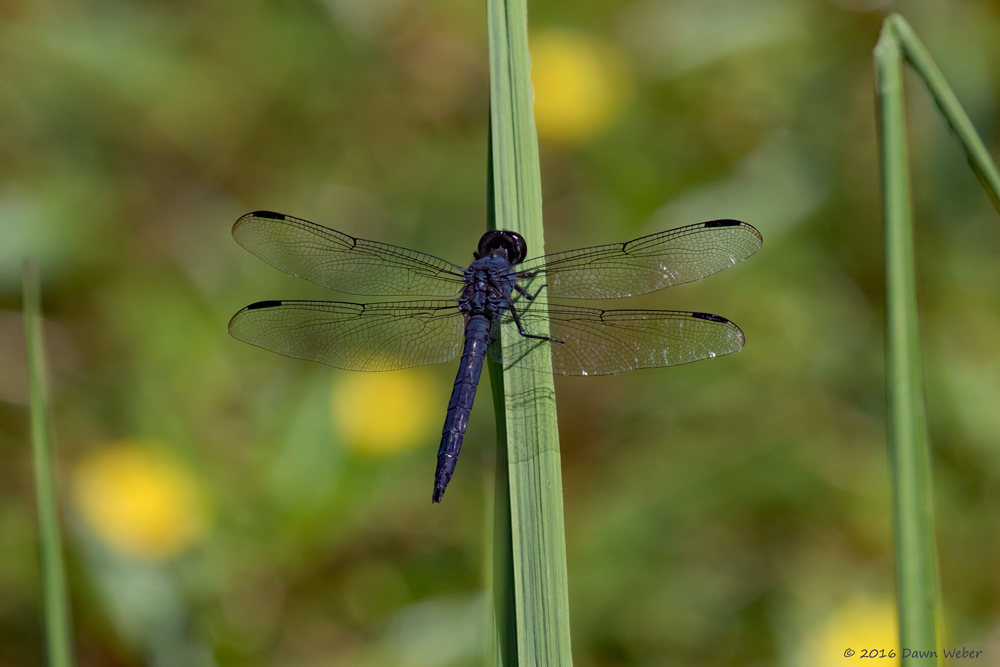
Slaty Skimmer – Male and female Slaty Skimmers are similar in appearance, making them more difficult to distinguish in the wild. Both males and females have brown or tan faces and dark-colored heads and bodies absent of any other distinguishing features. Both also have clear wings that sometimes have spots at the tips. Slaty Skimmers are found throughout the eastern United States and Canada, preferring to live near marshy lakes and ponds and slow-moving streams and creeks that have mucky bottoms. While males are typically found near vegetation at water’s edge, the females typically stay away from water except while mating and laying eggs.
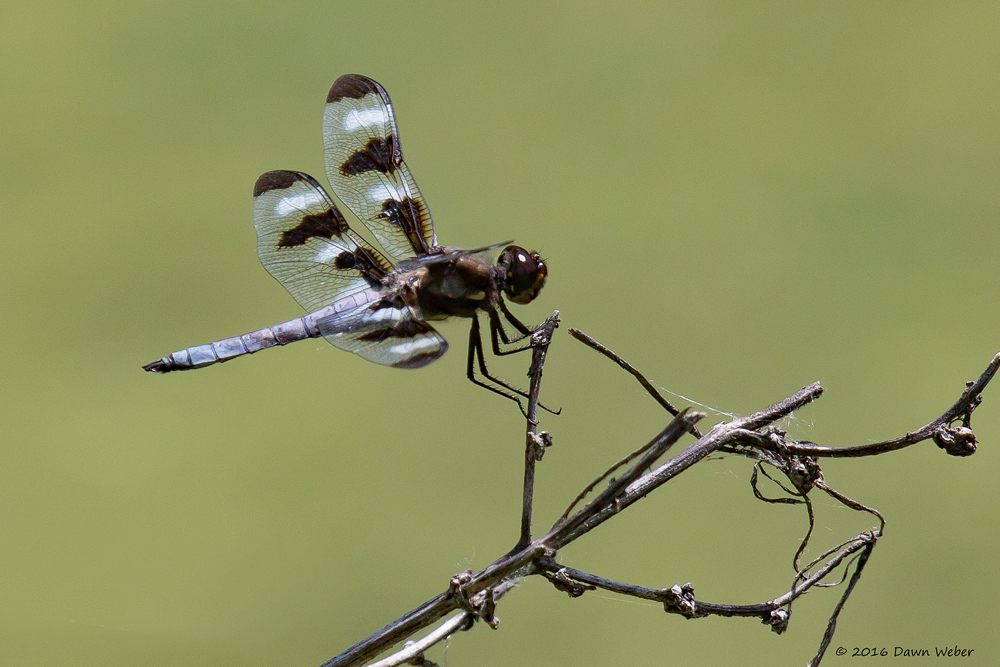
Twelve-Spotted Skimmer – Twelve-spotted skimmers have one of the most distinctive wing patterns among dragonflies. The name refers to the 12 brown spots that appear on the wings, three spots per wing. Males and females are easy to distinguish because of their spots. Females have only the 12 brown spots, while males have white spots that appear between the brown ones.
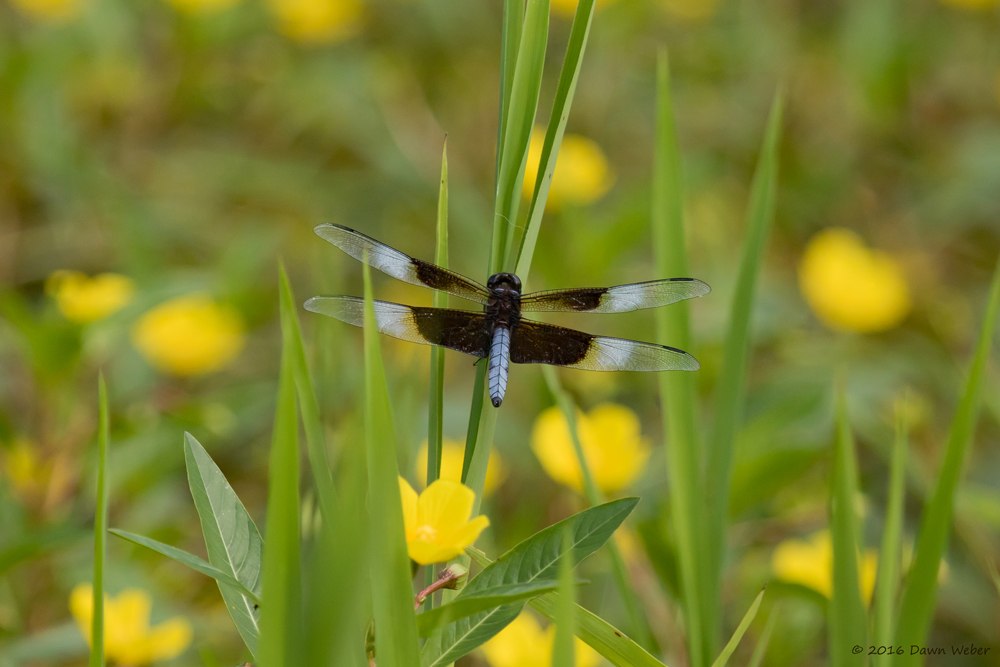
Widow Skimmer- Widow Skimmers can be identified by the large dark brown or black bands on their wings. Both the males and females have these dark bands, but the males also develop white bands on the outside of the wings, making it easy to differentiate between males and females. The bodies of these dragonflies are powder blue or chalky blue in appearance.
Keep an eye out for these beautiful insects with gossamer wings, iridescent colors and dazzling maneuverability while enjoying the trails at PWSNP or any other favorite hiking spot this summer.
CLIFFTOP, a local nonprofit organization, is focused on preserving and protecting area bluff lands.
A version of this article appeared in the June 19, 2020 edition of the Monroe County Independent.
©2020 all content rights reserved Clifftop NFP
Comments are currently closed.
